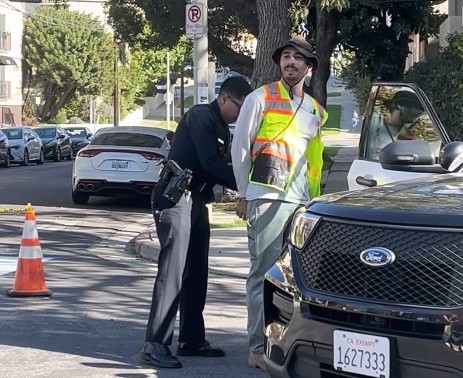One of the most popular elements of the new transportation authorization is its consolidation or elimination of 60 federal programs. But this cleanup is not without its casualties. One of those casualties is the off-system bridge program. And another one, indirectly, is bicycle and pedestrian programming.
As you can see, the Highway Bridge Program is no more. It's been replaced by the National Highway Performance Program (NHPP). But bridges that fall outside the National Highway System -- more than half the country's bridges -- aren't covered by the NHPP. Those "off-system" bridges are now part of the Surface Transportation Program (STP).
There's just one problem with that.
"All of the bridge money went to NHPP but less than half the bridges went there," said Nick Donohue of Transportation for America. "The others went to STP with no money."
The Surface Transportation Program, or STP, is a large, flexible and multimodal program, and has historically been a good source of funds for bicycle and pedestrian projects. Though states have spent an average of just 0.8 percent of their STP funds on biking and walking over the last five years, according to an analysis by the League of American Bicyclists, that equals $333 million -- a significant chunk of change when you're talking about such cost-effective projects. As a point of comparison, that's about a quarter as much as was spent over that same period by the Transportation Enhancements program, which was aimed more specifically at bike/ped projects.*
Shifting bridge repair into STP without a proportionate increase in funding will make competition stiffer than ever for STP funds, according to the Rails-to-Trails Conservancy.
To make matters worse, there's now less local control over those dollars. Under the new bill, metropolitan areas are getting a smaller slice of the STP pie. It used to be that 62.5 percent of STP funds were sub-allocated to cities and towns according to population. Now, it's only 50 percent.
That means that local entities, not just states, will be left with too much to do with too little STP money, according to Donohue. "They left 180,000 bridges out in the cold," he said, "and now local communities and MPOs have a false choice to make with STP money -- fixing these bridges or using the funds for the innovative projects they build with STP funds today."
As laid out in MAP-21, the STP program is short $4 billion in funding, compared to its responsibilities, Donohue says.
The Highway Bridge Program used to dedicate a third of its funding to repair. Now, there is zero money set aside for repair -- at a time when the need is as great as ever.
No problem, says the American Association of State Highway and Transportation Officials. "We thought that made sense, to combine those three programs into one program," AASHTO Director John Horsley told Streetsblog this week. "I think states will continue to allocate the same percentage, if not more, of that consolidated program to bridge preservation. You just can’t afford not to invest in bridge preservation."
He's not concerned about local entities feeling the squeeze, either. When asked if metropolitan planning organizations will be overburdened by the new rules, he said, "They're smart people... They'll figure it out."
Since 1978, states have been required by law to spend 15 percent of their bridge money on off-system, non-Federal-aid bridges, but that was a floor, not a ceiling: The other 85 percent was eligible for off-system bridges too. Now, off-system bridges are ineligible for any funding at all under the main program that covers bridges.
MAP-21 still requires states to spend an amount equal to 15 percent of their 2009 Highway Bridge Program funds for those off-system bridges, but now it's to be taken from STP, and there's no new money in STP to cover that. All told, you've got quite a funding crisis on your hands.
“Even with the current 15 percent set-aside in federal funding, and a small portion of Michigan’s gas tax dedicated to local bridges (approximately $31 million annually), current funding does not meet the needs of our aging infrastructure,” said County Road Association of Michigan Director John Niemela in a statement. “We are already expecting the impossible with severely limited dollars. The elimination of the off-system bridge program [will] have a devastating impact on the condition of local bridges in our state.”
An amendment accepted into the Senate bill, sponsored by Republican Roy Blunt and Democrat Al Franken, would have fixed this problem. It would have made off-system bridges eligible for a 40 percent share of National Highway Performance Program funds that aren't currently required for repairing the National Highway System. That provision was stripped out in conference.
* Note: Transportation Enhancements was a subset of STP under the old law. The $333 million (0.8 percent) number is non-TE STP funds. TE itself spent about $1.37 billion in those five years.






